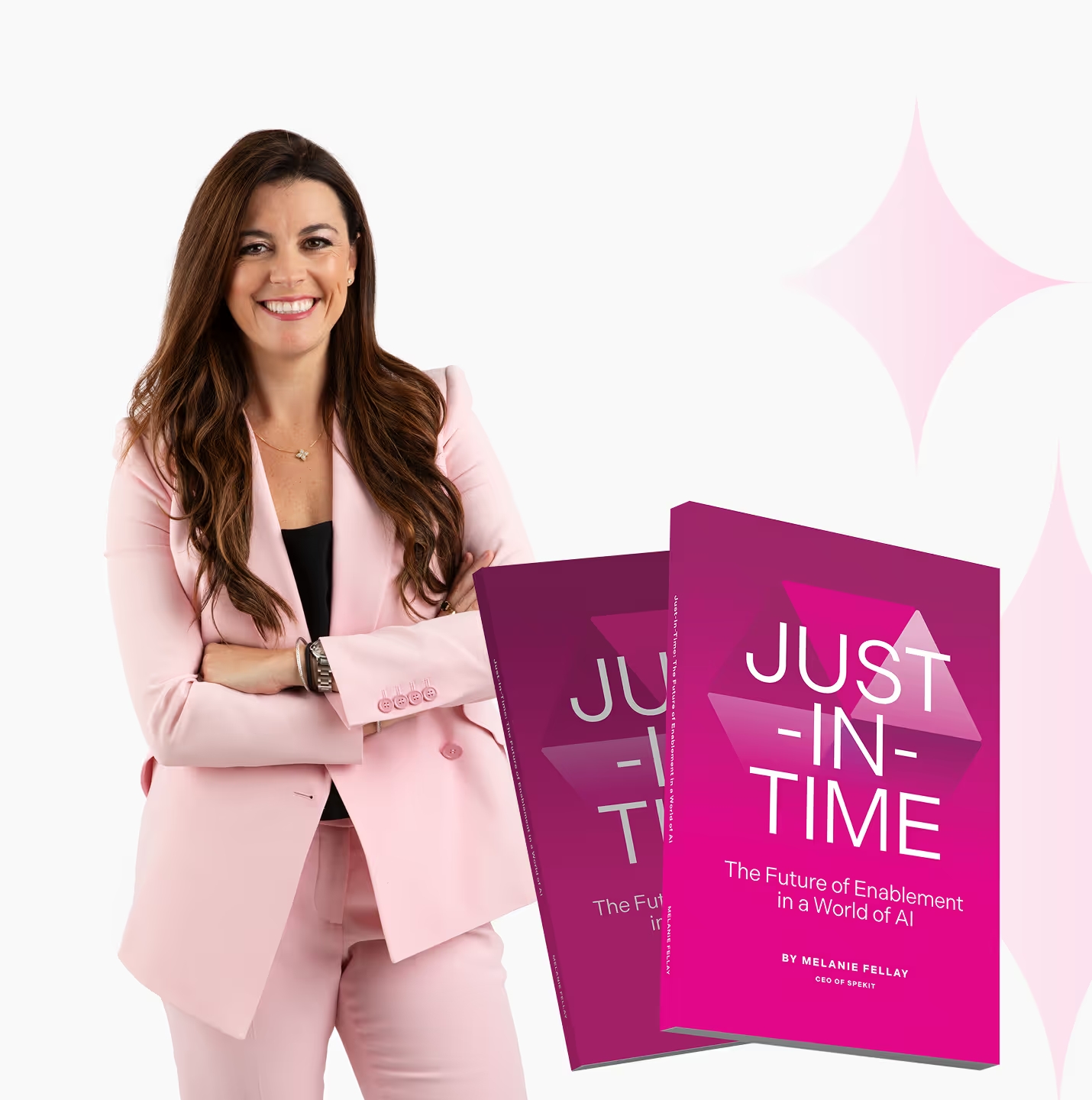When you hear "sales pitch," you might envision a slick salesperson delivering a rehearsed spiel. But what really is a sales pitch? It’s more than just a memorized paragraph. In simple terms, a sales pitch is a concise, compelling presentation of your product or service’s value, tailored to a potential customer's needs and delivered in a format that suits the situation.
In today’s hyper-informed world, buyers do their homework. In fact, 96% of prospects research companies and products before engaging with a sales rep. That means a successful sales pitch needs to go beyond surface-level benefits. It’s not just the classic elevator pitch; it’s an artful blend of storytelling, problem-solving, and value demonstration aimed at resonating with your audience.
Imagine you’re at a networking event, and someone asks what your company does. Your response — your sales pitch — can either spark enough interest for a follow-up meeting or fizzle out in forgettable small talk. A well-crafted pitch has the power to open doors and forge connections.
In this guide, we’ll explore different types of sales pitches, break down the essential elements of a strong pitch, dive into personalization strategies, and showcase real-world examples of compelling sales pitches. By the end, you'll have a clear roadmap to craft pitches that not only inform but also inspire action.
Let’s dive in.
What Exactly Is a Sales Pitch? (Definition & Real-World Context)
A sales pitch is a brief, persuasive message that highlights the value of what you're selling, often delivered within a minute or two. It can take many forms — a quick phone call, a cold email, a product demo, or even a casual conversation at an industry event. The goal is always the same: to convince the listener that your solution is worth their time and addresses a pain point they have.
Real-World Context: Why Sales Pitches Matter Today
Think about how we buy things today. Whether it’s software for a company or a new phone plan, most buyers will research online, read reviews, and compare options before they even talk to a salesperson. That means by the time you deliver your pitch, the buyer likely has some background information. They don't need a generic overview – they need to know how you can solve their specific problem better than anyone else.
For example, consider a sales rep for a project management tool. Their potential client might already know what project management software does. A generic pitch like, "Our tool helps you manage projects efficiently!" won’t cut it. Instead, a powerful pitch could be:
"You mentioned your team struggles with deadlines because everyone’s juggling multiple tools. Our project management platform brings all those tools into one place. One of our clients, a marketing agency, cut their project turnaround time by 30% after switching to us. What would a 30% faster delivery mean for your team’s success?"
This pitch works because it’s specific to the client’s pain point, provides a relevant example (social proof), and invites the listener to envision the benefit.
Types of Sales Pitches
Sales pitches aren’t one-size-fits-all. Depending on where you are and who you’re talking to, different pitch styles make sense. Here are some common types of sales pitches and when to use them:
1. The Elevator Pitch
Definition: A concise pitch you can deliver in the time it takes to ride an elevator (around 30-60 seconds).
Use it when: You meet someone informally (like at a conference, networking event, or indeed in an elevator) and they ask, "What do you do?" or you have a very short window to grab attention.
Example: “Hey, I’m Alex from CloudTask. We help startups save up to 40% on IT costs by automating data backups and security updates. In fact, one of our clients saved over 100 hours a month on manual IT tasks. It’s like having an extra team member focused solely on security — without the extra hire.”
Why it works: It's short, snappy, and highlights a clear value (saving time and money) with a quick example of success.
2. The Email Pitch
Definition: A written pitch, often in a cold email, aiming to spark interest and get a response or meeting.
Use it when: You’re reaching out to someone who doesn’t know you yet, such as a cold prospect or a referral introduction via email.
Example:
Subject: Reducing [Prospect's Company]’s customer support backlog in 2025
Body:
“*Hi [Prospect Name],
I saw on LinkedIn that [Prospect's Company] is aiming to improve customer support response times. We recently helped another tech firm cut their support backlog by 50% in two months using our AI-powered ticketing system.
If you’re grappling with a growing ticket queue, let’s talk. I have a couple of ideas that could help [Prospect's Company] see similar results. Are you available for a 15-minute call next week?*
Best,
[Your Name]*”
Why it works: It’s personalized (references the prospect’s company goals), offers a tangible result (cutting backlog by 50%), and ends with a clear call to action (CTA) for a short meeting.
3. The Social Media Pitch
Definition: A casual, quick pitch delivered via social media platforms like LinkedIn or Twitter.
Use it when: You notice a prospect is active on social media, or you want to engage someone in a less formal channel than email.
Example (LinkedIn message):
“*Hi [Prospect Name],
I noticed your post about the challenges of onboarding new remote hires. That caught my eye because we faced the same issue last year. We developed a digital onboarding solution that reduced our onboarding time from 3 weeks to 1 week.
Would love to share what we learned and see if it could help your team. Open to chat?*”
Why it works: It directly connects to a pain point the prospect has publicly mentioned, making it highly relevant and timely. It’s friendly and peer-like in tone, rather than overly formal.
4. The Presentation or Demo Pitch
Definition: A longer, more formal pitch, often supported by slides or a live demo of your product.
Use it when: You’re in a scheduled meeting, such as a product demo or pitch presentation to a buying committee, where you have more time (typically 15-30 minutes or more).
Example: Imagine you’re pitching to a group of executives. You might structure it as:
- Hook: “Did you know 73% of sales reps don't fully grasp their client's needs, leading to lost deals?”
- Problem: “Your teams might be facing a similar disconnect with prospects – more than half the deals in your CRM last quarter stalled due to unclear customer requirements, based on your sales manager’s report.”
- Solution (Demo): “Let’s walk through how our platform identifies and tracks customer needs throughout the sales process... [demo specifics].”
- Value Prop: “By capturing needs better, companies using our tool have seen a 20% increase in conversion rates.”
- Example/Proof: “For instance, Acme Corp used our solution and shortened their sales cycle by 10 days, adding $2M in quarterly revenue.”
- CTA: “If this sounds like a fit, our team would be excited to pilot this with [Prospect Company]. How do you feel about taking the next steps?”
Why it works: This structured approach ensures you cover all bases – from grabbing attention with a compelling stat to addressing the prospect’s specific situation, demonstrating the product, and backing it up with proof.
5. The Follow-Up Pitch
Definition: A pitch used to re-engage a prospect who has shown interest but gone quiet or after an initial meeting.
Use it when: A prospect downloaded a whitepaper, attended a webinar, or had an intro call but hasn’t moved forward yet.
Example (voicemail or email):
“*Hi [Prospect Name], following up on our chat last month. You’d mentioned the goal of expanding to international markets. I just came across a case study of a client in your industry who expanded to 3 new countries in a year using our platform. It reminded me of your plans. I’ll send the case study in a separate email — it’s a quick 2-page read.
Let’s reconnect soon to discuss how we can support [Prospect Company]'s expansion goals. Would next Tuesday at 10 AM work for a brief call?*”
Why it works: It shows you remember their goals, provides them with valuable content (a relevant case study), and gently nudges the conversation forward with a suggested meeting time.
Elements of a Strong Sales Pitch
No matter the type of pitch, the best ones usually include a few key elements. Think of these as the building blocks of your pitch:
- Hook – Grab their attention immediately. This could be a surprising statistic, a provocative question, or an insightful observation. The hook’s job is to make the listener want to hear more. For example, starting with “Did you know 75% of businesses struggle with X?” can pique curiosity.
- Problem Statement – Address the prospect’s pain point. Clearly articulate the challenge or problem your prospect is facing. It needs to be something they care about. (“Are your sales processes inconsistent and leading to lost opportunities?” is a question that can resonate if indeed inconsistency is a known issue.)
- Value Proposition – Present your solution and its unique value. This isn’t just listing features. It’s explaining how your product/service will solve the problem or improve the prospect’s situation. Be clear and specific about benefits: faster processes, cost savings, increased revenue, happier customers, etc.
- Social Proof – Include a real-world example or evidence. People find comfort in knowing others have succeeded with your solution. This could be a quick customer story (“We helped a client in your industry do X”), a testimonial, or even a relevant figure like "90% of our customers see results in the first month."
- Ask or CTA – End with a call to action. Depending on the context, this could be a question (“Can we schedule a call to discuss further?”), an invitation (“Would you like to see a demo?”), or a direct ask (“Are you ready to start a free trial?”). The key is to guide them to the next step while the interest you’ve built is at its peak.
Visualizing a Great Pitch: You can picture a great sales pitch like a funnel. At the wide top, you have the hook drawing people in. In the middle, you highlight the problem and pour in your value proposition and social proof – these elements convince and convert the interest into desire. At the narrow bottom, you have a clear CTA that directs the flow towards a next step (like booking a meeting or signing up for a trial).
Image suggestion: A simple funnel diagram labeled with Hook at the top, Problem & Solution in the middle, and CTA at the bottom, illustrating how a pitch narrows down from attention to action.
Personalizing Your Sales Pitches
One size fits nobody in sales. Personalization is the secret sauce that turns a generic pitch into a conversation that feels tailored for the person in front of you. Here’s how to make your pitches more personal:
Research, Research, Research
Before you pitch, do your homework on the prospect:
- Company info: Know what the company does, recent news, their industry position, and their challenges. For example, if you’re pitching a sales enablement tool and you read that the company is doubling its sales team, mention how your tool can help ramp up new reps quickly (maybe referencing Spekit's insights on mastering your sales process for onboarding).
- Role of the individual: A VP of Sales will care about different things than a Sales Rep or a CEO. Tailor your value points accordingly. A VP might care about hitting targets (so talk about how your solution increases win rates), whereas a frontline rep might care about ease of use (so talk about how it makes their day-to-day easier).
- Past interactions: If this person has engaged with your content (like downloading something or reading a sales training article on your site), reference it. “After you downloaded our remote selling template, did you find any strategies that stood out?” – This shows you notice and care about their journey.
Use Their Language
If you’ve had prior conversations or you’ve read quotes from them, try to echo their phrasing. Did they call something “a nightmare” or “game-changing”? Using the same term shows you’re listening. For instance, if a prospect mentioned they want to "modernize their sales playbook," you might say, "You mentioned modernizing your process – our platform could be the engine behind a modern sales playbook that reps actually use."
Empathize with Their Situation
Show that you understand their feelings. If a prospect seems overwhelmed by too many tools, you might say, "I get it – juggling multiple sales tools can feel like herding cats." This isn’t just fluff; it establishes an emotional connection. You’re essentially saying, "I see you, I understand your problem, and I truly want to help."
Adjust the Tone and Style
Personalization also means adjusting how you deliver the pitch:
- Formal vs. Casual: Some clients appreciate a formal tone, while others respond better to casual, friendly banter. Match their vibe.
- Pace and Detail: Some prospects are detail-oriented and love data and specifics. Others just want the high-level impact. Gauge their style and lean into it. If they ask a lot of technical questions, give technical details in the pitch. If they’re big-picture thinkers, stick to outcomes and results.
Timing and Medium
Personalization can also be about when and how you deliver the pitch. If you know your prospect is not a morning person (maybe from a previous chat or social media), don’t schedule your call first thing in the morning. If they prefer text messages over emails (some small business owners do), a brief text pitch might work better than a lengthy email.
Remember: The content of your pitch (what you say) is crucial, but the context (how, when, and to whom you say it) makes all the difference.
Examples of Strong Sales Pitches (and Why They Work)
Let’s analyze a few real-world inspired examples of excellent sales pitches. These are different from Highspot’s examples and are tailored to showcase variety. We’ll break down why each one shines:
Example 1: The Consultative Pitch (Selling a Service)
Imagine you’re a consultant offering leadership training for tech startups. You meet a founder at a meetup. After some small talk, they mentioned struggles with team morale.
Pitch: “You know how in a startup, everyone’s wearing a million hats and burnout creeps in? I’m a leadership coach who helps tech founders boost team morale and productivity by building a culture where everyone feels heard and motivated. One startup I worked with had a 40% turnover rate; after our 6-month program, they haven’t lost a single key team member this year, and their product delivery speed is up 25%. It’s like turning a stressed team into a championship team. If you’re curious, I’d love to chat about what’s going on at [Prospect’s Company] and see if I can help.”
Why it works: It starts with a relatable scenario (wearing many hats, burnout). It clearly states the value (boosting morale and productivity through better culture). It gives social proof with impressive results (zero turnover of key staff, 25% faster delivery). And it ends with a genuine offer to listen and help, rather than a pushy sales ask.
Example 2: The Storytelling Pitch (Product-focused)
Scenario: You’re selling cybersecurity software. You’re on a call with a potential client’s CTO who seems skeptical about vendors.
Pitch: “*Last summer, a hospital in California woke up to find 10,000 patient records locked by ransomware – nightmare scenario. They were a customer of ours, and because they had our cybersecurity system in place, they were back up and running in under an hour with zero data loss. The CTO told me it was like having a "digital SWAT team" on call.
Now, I’m not saying you’ll face a ransomware attack tomorrow. But if you do, wouldn’t it be great to have that kind of resilience? With [Our Product], any breach attempts are isolated and neutralized in minutes. It’s the difference between a minor hiccup and a week-long company crisis.
How prepared do you feel [Prospect’s Company] is for something like that?*”
Why it works: It tells a story that evokes emotion (fear of a ransomware attack) and then positions the product as the hero (digital SWAT team saving the day). It uses vivid imagery and a quote from a real CTO for credibility. It doesn’t directly say “buy our product” – instead, it invites the prospect to consider their own preparedness, steering them to the conclusion that they need the solution.
Example 3: The ROI Pitch (Metrics-driven)
Scenario: You’re selling a marketing automation tool to a small business owner who is very cost-conscious.
Pitch: “*Over the last year, our average customer saw a 5x return on investment with [Our Tool]. For every $1 they spent, they got $5 back in revenue. The reason is simple: we help identify which marketing efforts actually bring in customers, so you stop spending on what doesn’t work.
Take Carla’s Cakes (a bakery in Denver) – Carla was spending $2,000/month on ads with little results. Our tool showed her that Instagram was bringing 80% of her new orders, so she doubled down there and cut wasteful ad spend. Her monthly revenue jumped from $10k to $15k in three months.
If [Prospect’s Company] could even get a fraction of that kind of lift, it would be worth exploring, right?*”
Why it works: It’s heavy on results and numbers – perfect for a data-driven or budget-conscious prospect. It directly addresses the concern of cost (“ROI” and getting revenue back from spend). The story of Carla’s Cakes makes it relatable, and the numbers (5x ROI, 80% of orders from Instagram, 50% revenue jump) are concrete. It ends with a rhetorical question that prompts agreement.
Example 4: The Visionary Pitch (Selling an Idea or New Concept)
Scenario: You’re pitching an innovative AI tool that’s very new to the market to a prospect who isn’t actively looking for such a solution.
Pitch: “*Imagine if every routine task in your day could be handled by an assistant that never sleeps. That’s what we’re building at [Your Company] – an AI that schedules your meetings, answers basic emails, updates CRM entries, you name it. So you and your team get to focus on the work that actually moves the needle, the creative, strategic stuff humans do best.
It’s like having an extra teammate who works 24/7, but costs less than a temp hire. We’re early in this journey, but our beta users are already saving 10 hours a week on average.
I reached out because I thought [Prospect’s Company] might appreciate being at the cutting edge of something that could change how we all work. Does freeing up 10 hours a week for each of your team members sound intriguing?*”
Why it works: This pitch sells a vision of the future. It invites the prospect to dream a little (“imagine if…”). It clearly articulates the unique value (assistant that never sleeps) and benefits (focus on high-value work, save 10 hours a week). It also subtly flatters the prospect by implying they’re an innovative leader who'd appreciate cutting-edge solutions. It ends with a question about a benefit that’s likely to get a “yes” (who wouldn’t want 10 extra hours?).
How to Personalize Your Pitches for Maximum Impact
We touched on personalization earlier, but it’s so important that it deserves its own section with actionable tips:
- Leverage Templates but Tailor Them: Using a sales template is a smart way to start (it ensures you include key points). But always customize at least 20% of it for the recipient. This could be as simple as referencing a recent company event (“Congrats on the new product launch last week!”) or as detailed as aligning your pitch with their company’s mission statement.
- Use the Prospect’s Name and Company: This sounds basic, but you’d be surprised how many pitches feel generic. Instead of saying “businesses like yours,” say “at [Prospect’s Company].” If possible, mention their industry or market too (“retailers like [Prospect’s Company]” or “teams in fintech”). It shows you know who you’re talking to.
- Incorporate Recent Wins or Challenges: If their company was in the news, bring it up. “I saw [Prospect’s Company] just acquired a smaller startup — exciting times! Scaling might be on your mind, which is exactly where our solution can help...” This demonstrates you’re keeping an eye on them (in a friendly, not creepy, way).
- Ask Questions: Instead of doing all the talking (or writing in an email pitch), ask a question or two. E.g., “Are you finding it hard to keep your sales team updated on process changes?” (then you could link to something like Mastering Your Sales Process if it’s relevant.) Questions engage the prospect’s mind, making them an active participant.
- Mirror their Style: Pay attention to how the prospect communicates. Do they use bullet points in emails? Do they jump on calls rather than reply to emails? Adapt your pitch format and communication style to what they seem to prefer. It’s a form of personalization that often goes unnoticed but can make a big difference in how your message is received.
- Build on Prior Touchpoints: If this isn’t the first interaction, refer back to earlier conversations. “Last time we spoke, you were heading to a conference. How did it go?” or “You mentioned interest in better sales onboarding tools. Since then, I came across a new sales plays template that might help...” This continuity shows you value the relationship, not just the sale.
Bringing It All Together: Crafting Your Winning Sales Pitch
Crafting a winning sales pitch is a bit like cooking a great meal – you need the right ingredients, a good recipe, and a personal touch:
- Ingredients: These are your elements of a strong pitch – a catchy hook, a clear problem statement, a compelling value prop, credible social proof, and a direct CTA.
- Recipe: This is the structure or type of pitch you choose – be it an elevator pitch, email pitch, or story-driven pitch. The structure guides you on how to mix those ingredients.
- Personal Touch: This is the personalization – adjusting flavor to taste, meaning tailoring the pitch to the person who’ll “consume” it.
When you mix these correctly, you get a pitch that's not only informative but also persuasive and memorable.
One final example, combining everything:
Scenario: You’re pitching a sales enablement tool (like Spekit, for instance) to a sales manager.
Pitch (Phone call):
“Hi Jamie, thanks for taking a few minutes. I noticed on [Prospect Company]’s LinkedIn that the sales team has grown 50% this year – congrats on that! With all these new reps, I’m guessing getting everyone up to speed and sharing best practices is a priority (correct me if I’m wrong).
I work with teams exactly in that boat. To share one story – Acme Corp onboarded 30 new sales reps last quarter. It usually took them 3 months for a new rep to hit quota, but with our sales enablement platform, they brought that down to just 6 weeks. That’s half the time to productivity. The VP of Sales told me it was a game-changer for their growth plans.
Basically, our tool makes learning and accessing sales knowledge super easy – think of it as a digital sales playbook that lives where your reps work. No more digging through old decks or documents; it’s all right there in their flow.
Given your big team expansion, I believe [Prospect Company] could see similar results. Does this sound like something that could help your team?*”
Why this works: It starts with personalization (mentioning their team growth and a likely related challenge). It asks for confirmation (“correct me if I’m wrong” – inviting them to engage). It then shares a relevant success story with concrete results (3 months down to 6 weeks). It clearly states the value (a “digital sales playbook in their flow”). And ends by asking if it resonates – a gentle CTA.
This pitch could easily be adapted into an email or a LinkedIn message by trimming or tweaking, but the core elements would remain.
Next Steps: Building Your Own Pitch Arsenal
Every salesperson or entrepreneur should have an arsenal of pitches ready to go:
- Elevator pitch for quick intros.
- Email templates for cold outreach (remember to personalize them!).
- Social proof stories you can plug in as needed.
- Different hooks (a question, a bold claim, a surprising fact) depending on what might grab your prospect.
- Questions to ask the prospect to engage them in the pitch.
Write them down, practice them, and refine as you learn what resonates.
Internal Resources: If you’re looking to up your game, check out Spekit’s resources on building effective sales materials and processes. For instance, a sales playbook can provide a solid foundation for consistent pitches across your team. Spekit also offers templates and tips to reinforce your sales methodology in daily practice, ensuring your pitch isn’t just a one-off magic trick, but part of a scalable sales process. And if you’re training new reps to pitch, our guide on sales training might be a handy resource.
Conclusion: Mastering the Sales Pitch
A great sales pitch is a blend of preparation and personalization, information and inspiration. It’s about knowing your stuff (your product and how it helps) and knowing your audience (their needs and how they communicate). When you get that mix right, your pitch stops being a pitch and starts being a genuine conversation — one that leads to “Tell me more” or “When can we start?”
In a world where buyers are busier and more informed than ever, having a strong, adaptable sales pitch isn’t just nice-to-have, it’s a must-have. It’s your tool to cut through the noise and make a connection.
So, start crafting your pitches. Use the types and elements we covered, infuse them with your personality, and practice, practice, practice. Soon, you’ll have prospects not only understanding what your product is, but truly believing in what it can do for them.
Ready to elevate your sales pitches to the next level? Explore Spekit’s sales enablement tools and templates that help reinforce great pitching habits every day. With Spekit, you’ll find resources to keep your sales content organized (so you always have the right story at your fingertips) and training content to keep your skills sharp. Don’t just pitch better — sell smarter, with a little help from Spekit.
Explore our sales enablement tools and templates to craft winning sales pitches and drive more deals!







